Presentation by Keith A. Erekson
Transcript

Drowning in Information
Good morning. Thank you for being here today. I hope that you will hear and feel and find the very things you need for your life at this time.
In the twenty-first century, we are drowning in information. Have you ever seen something online and wondered if it was true? Maybe it was a claim about a diet or fitness program. Or perhaps something about politics or health care. Maybe something about the Church’s history or teachings. Although “righteousness and truth” do “sweep the earth as with a flood” in our day, we also encounter rumors, myths, misinformation, and deception.

Humans Lack Needed Skills
It turns out that humans are generally unskilled at verifying information, and Latter-day Saints do not fare much better than any others. Our General Handbook has long warned about rumors and innuendos, and during the pandemic our leaders had to specifically warn us against conspiracy theories as well.

Jesus Taught How to Seek
The Lord wants to help us find truth and know for ourselves “the truth of all things.” During His ministry, the Savior taught a parable about fish that applies to our Information Age. He spoke of “a net, that was cast into the sea.” When it was retrieved, it “gathered of every kind” until “it was full” and was then drawn to shore and sorted, “the good into vessels, but [the bad cast] away.”
If we want to find truth today—the “knowledge of things as they are, and as they were, and as they are to come”—then we must develop spiritual sensitivity and mental habits for evaluating the information we encounter. Today I want to share three stories that illustrate how we might approach the information around us.

Story #1 – A Book
Let’s begin with a story about a book. This specific copy of the Book of Mormon was donated to the Church in 1989, and for about 30 years, people believed and retold a story about the handwriting on its pages. There are markings on 89 of the pages, mostly underlining and circling. But on 36 of the pages there are also handwritten words. For example, on the title page is this signature, “E. A. Presley,” and on the last page the words “Father, I want more! I need more now – help me!”

The idea that Elvis Presley read the Book of Mormon – and believed it –captured the imagination of many Latter-day Saint speakers, teachers, and journalists. The story was told and retold at firesides, in classrooms, and online. Journalists who were normally hard-hitting simply gushed over the tale. One filmmaker went so far as to produce an independent film about how the King of Rock and Roll opened his heart and met with the missionaries!

In September 2018, while I was serving as the director of the Church History Library, we received a request from a local television station in Salt Lake City. “We would like to do a story,” the email began, about the book’s “historical, cultural, and spiritual value.” And there was a catch: “Is there someone who can assist and point out some of the book’s features?” The reqeust went to a meeting with people named “Elder” and they assigned the task to me! I had never looked at the book before in my life. They wanted to film on a Friday and air the show the following day, in between sessions of the October General Conference, the second conference presided over by President Nelson. I was quite busy, but finally called up the book on Monday afternoon, a few days before the planned filming.
As I looked over the markings and the information on file about the book, it quickly became apparent that things just did not add up. First, the timeline: the alleged story was that Elvis read and marked the entire book during the last two weeks of his life—the same time in which he hosted his 9-year-old daughter, prepared to go on tour, and worried about a damaging exposé published by his former bodyguards about his personal violence and drug abuse. There were also three different stories about the book’s history. In one his father wanted it destroyed but a fan rescued it, in another the father wanted the Osmond family to have it, and in the third it was sent in a box of books to auction.
So I went back to my bosses and said, “I can’t prove it just yet, but I don’t think this book is authentic. I think we should cancel the interview.” They trusted my judgement and when I contacted the television station, they thought about it for about three seconds and replied, “Can we film the book without you?” I laughed and said, “No, you’ve pulled me into this and now we’re going to get to the bottom of it!”

The First Habit: Stop And Think
So here’s the first habit: Stop and think. So much of our Information Age is designed to prevent thinking. Advertisers, politicians, and social media environments do everything they can to evoke quick and unthinking responses—a like or share on social media, an emotion such as laughter or outrage, an ideological declaration to “stand with” or “stand against,” a craving to posses or consume a product. As seekers of truth, we must develop the self-awareness and self-discipline to stop and think.
Well, there was no general conference television special about the book, but I did begin the deep analysis and research involved in authenticating historical documents. A historian’s work in the archives is painstaking and difficult.

For example, I had to visit Elvis Presley’s Graceland to review authentic handwriting samples (and my wife decided I needed a chaperone on that trip!). It also turns out there is a significant collection of Elvis materials at a research library in Hawaii. You just never know where the demanding work of historical research will lead! In the end, five independent handwriting experts corroborated my findings. The full analysis has been published, but here are the highlights:

The Signature is Forged
- The signature is clearly a forgery. Here is an authentic signature and here is the one in the book. Each letter has problems, but they are especially visible in the P that is pressed up against “resley” instead of being separate, the S with a closed bottom instead of being open, and the Y is just totally wrong.

The Annotations are Forged, Too
- Elvis was a reader, and he wrote in his books. Here is a sample from the Graceland collection that illustrates the heavy pressure, crooked lines, and block print letters. The forged annotations are not even close!

Pranking
- And a look at the content of the annotations shows the forger was obviously pranking us. Next to a statement that the Savior would soon return to the Father was written, “Me too.” Beneath a picture of ancient records on gold plates is written “gold records – real ones.”

“All Shook Up”
In short, the annotations are clearly forged and the link to Elvis Presley is extremely unlikely. And that, left many Saints, “all shook up.” When I published the findings, I was flooded with emails, online comments, and even in-person visitors to the Library. Many Saints desperately wanted this story to be true. It seems we love stories of individual redemption, and we also appreciate famous outsiders who can affirm that Latter-day Saints may be weird but we’re also harmless.
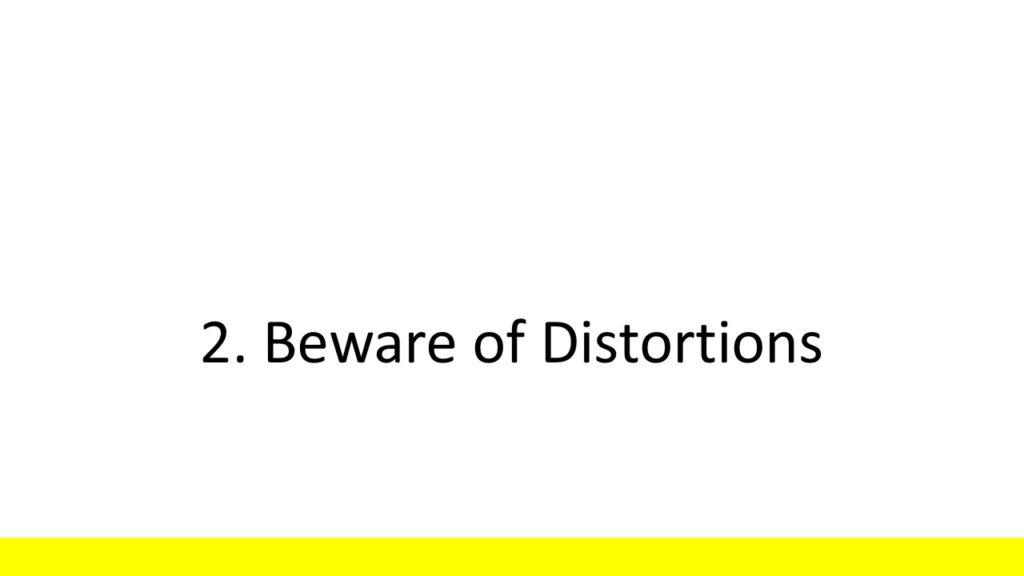
The Second Habit: Beware of Distortions
The second thinking habit to develop is to become aware of distortions. Our second story begins when the leaders of a stake in Utah—which shall remain unnamed—gathered to plan a summer camp for the young women. A series of meetings involving teens, ward and stake leaders, the high council, and the stake presidency concluded that a good camp needed a good theme, and that “Aim High” was the theme they needed. They wanted their precious young women to believe in themselves and aspire to the best possible accomplishments.
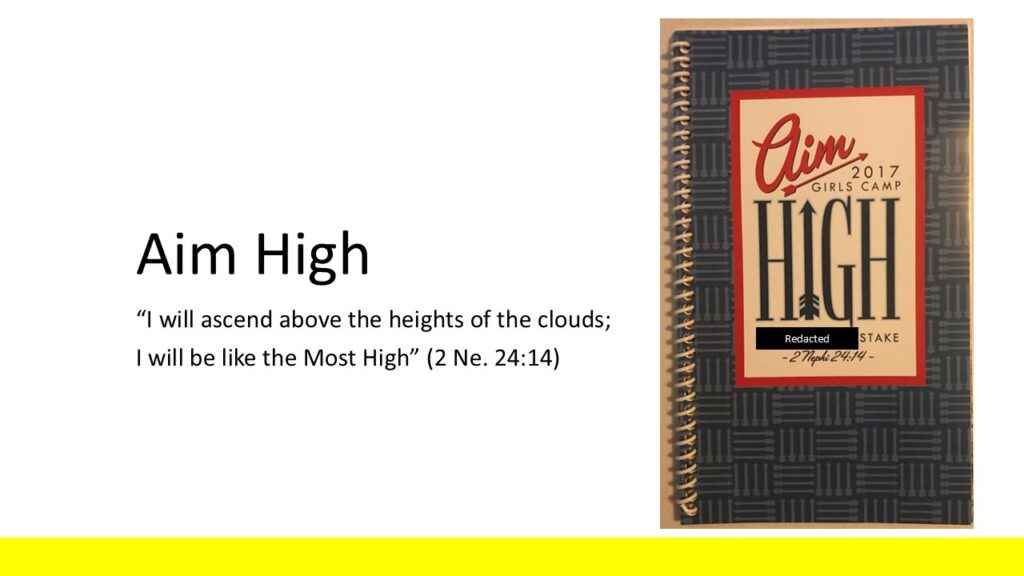
2 Nephi 24:14
Next, an assignment was given to find a scripture to accompany the theme. When the recommendation came forward, all of the leaders agreed that 2 Nephi 24:14 was perfect: “I will ascend above the heights of the clouds; I will be like the Most High.” They interpreted the theme and the scripture passage to mean “You can accomplish your goals! As a daughter of God, you can become like Him!” Stake leaders emphasized the theme repeatedly in their planning, their communication, and their talks. And they plastered the theme and scripture across T-shirts, water bottles, banners, and personal study journals for each girl in the stake.
On the most important evening of the camp, the stake president delivered a stirring and motivational address on the theme. Afterwards, some of the girls went back to their tent where one of them said, excitedly, “Let’s read the chapter of our camp theme!”
The girls pulled out their scriptures, opened to 2 Nephi 24, and began to read around the circle. This chapter contains Nephi’s quotation of a passage from the Biblical book of Isaiah, but the young women were smart enough to understand it. They began in verse 1, but as they read along they began to grow uneasy. When they got to verse 12 one of them said, “Uh oh,” as the character of Lucifer was introduced. In the following verse, they read his inner thoughts, and then their camp theme came as the climactic, “I [Lucifer,] will ascend above the heights of the clouds.” Their hearts sank.
“Our camp theme was taken from the words of Lucifer?” one of them stammered.
“Are we a cult?” another asked.
I wish that were the end of the story. The next morning, the girls shared their findings with their stake leaders who said, “Oh, you noticed.” It turns out they, too, had noticed, but only after they had printed the T-shirts, water bottles, banners, and personal study journals. They asked the girls not to tell any of the other young women in the stake.

Sniff Tests
Most of today’s misinformation comes packaged in fonts, colors, images, and other efforts to look legitimate. Like the Lamanite queen in the Book of Mormon who asked Ammon about her husband Lamoni’s health (see Alma 19:1–12), we do not need to be a medical professional to tell if something stinks or not. We may not have all the facts or a complete understanding, but we can perceive when others do not possess them either. Several common distortions can serve as “sniff tests,” or clues, that something is not right.
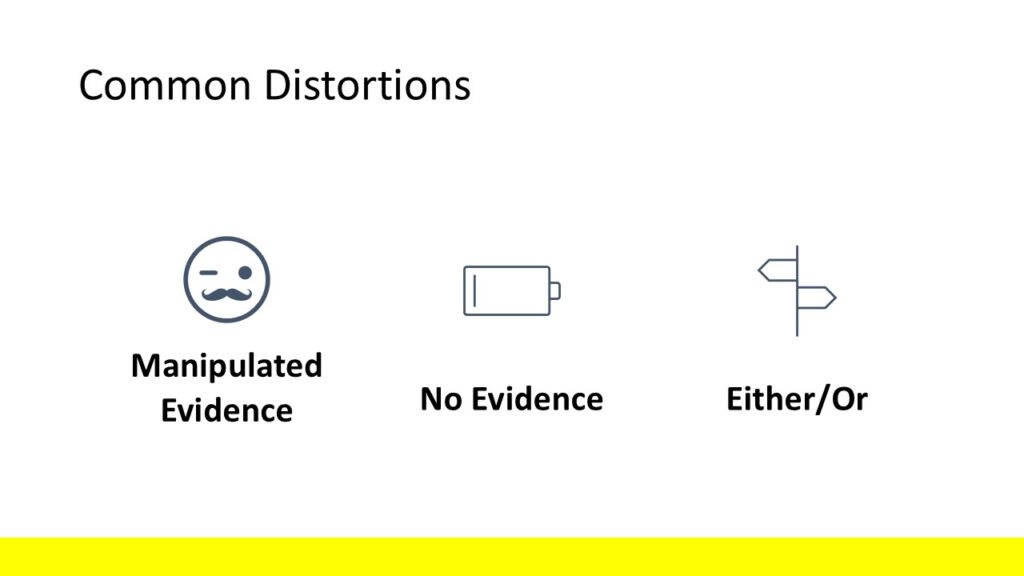
Common Distortions
Frequently, evidence is manipulated—it is stretched, ignored, or hidden. In this case, both the scriptural words and the desired intent were true, but the passage was taken out of context. Other deceptive sources present evidence that is vague or not clearly stated. Some select only a narrow range of favorable evidence. Others emphasize loudly that “the facts speak for themselves,” while omitting how and why they selected those specific facts. The antidote is a simple request: “Show me the evidence.”
A related tactic is to present no evidence at all—no sources provided, no expertise cited. Instead, the messenger appeals to other things, such as:
- To authority or power (by quoting someone well known who “says so”),
- To emotion (with melodramatic music or tear-jerking stories),
- To the process (“I watched a lot of videos on YouTube”), or
- To fear (“If we allow this, then that will surely follow”).
One more helpful sniff test is to watch for either/or options and polarized issues. This tactic oversimplifies the realities and complexities of life by reducing them into polarized either/or propositions. These oversimplifications might:
- Present “both sides” (when the issues actually have more than two dimensions).
- Urge to vote for only one political party (never the other).
- Encourage you to be loyal to one brand only (and buy all of its accompanying accessories).
- Use exaggerations or superlatives such as always or never.
- Pressure you to act right now, before time runs out!

Examine Closely
A final thinking habit to develop is to learn and follow routines for examining information closely. The story I will share illustrates a routine that could save Latter-day Saints a lot of trouble. Instead of telling stories in Sunday School that begin “I can’t remember which General Authority said it but,” we could learn to trace information to a source. The Internet can be a helpful resource as we:
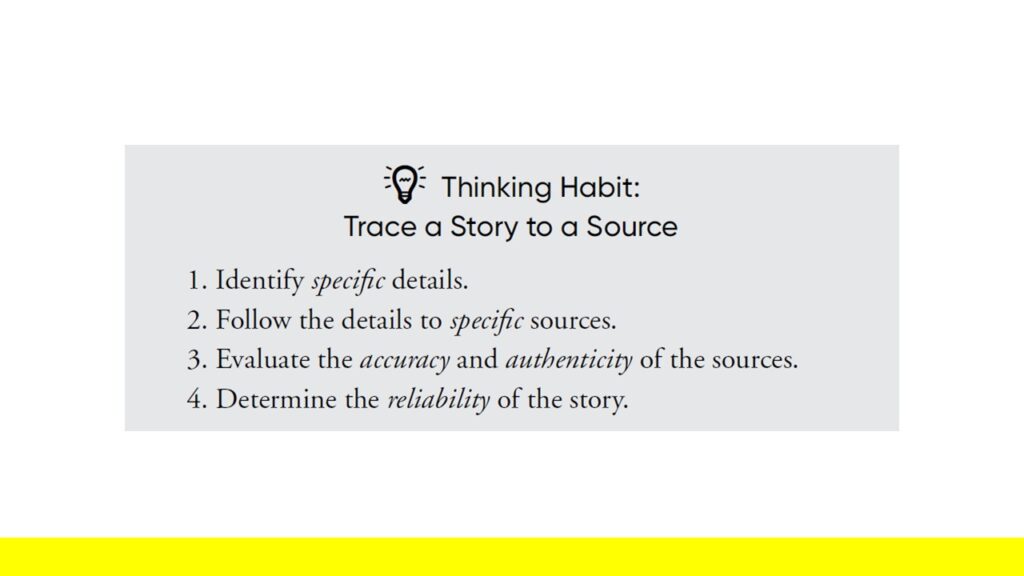
- Identify specific details.
- Follow the details to specific sources.
- Evaluate the accuracy and authenticity of the sources.
- Determine the reliability of the story.
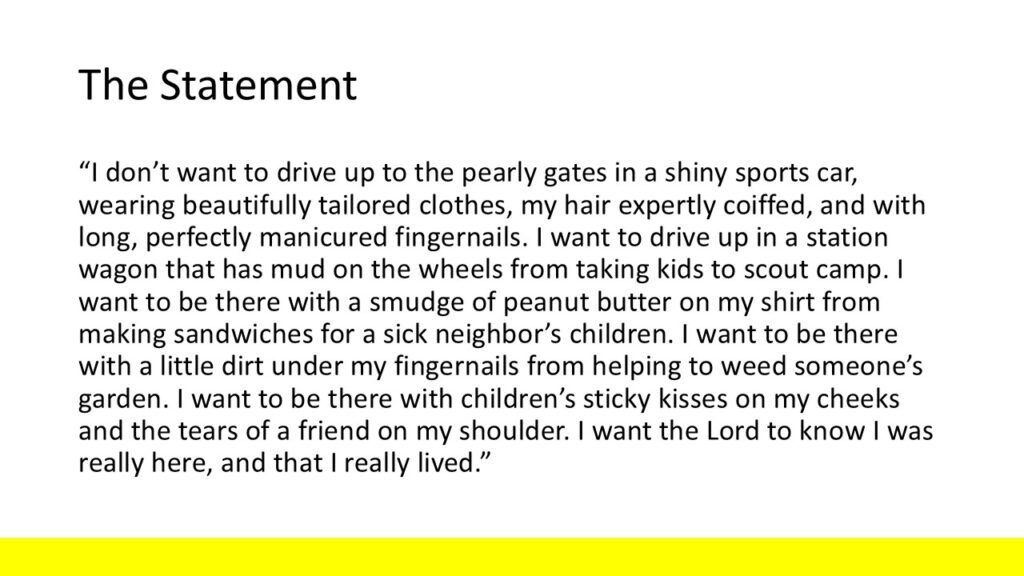
The Statement
A few years ago, I was asked to examine a statement commonly attributed to Sister Marjorie Pay Hinckley, wife of President Gordon B. Hinckley. She allegedly said:
“I don’t want to drive up to the pearly gates in a shiny sports car, wearing beautifully tailored clothes, my hair expertly coiffed, and with long, perfectly manicured fingernails. I want to drive up in a station wagon that has mud on the wheels from taking kids to scout camp. I want to be there with a smudge of peanut butter on my shirt from making sandwiches for a sick neighbor’s children. I want to be there with a little dirt under my fingernails from helping to weed someone’s garden. I want to be there with children’s sticky kisses on my cheeks and the tears of a friend on my shoulder. I want the Lord to know I was really here, and that I really lived.”

The sentiment here is absolutely lovely, and no doubt it has proven inspirational to many women—your home and children need not be perfect, your life is valuable, you are good enough. And the quote shows up everywhere – with Sister Hinckley’s photo,
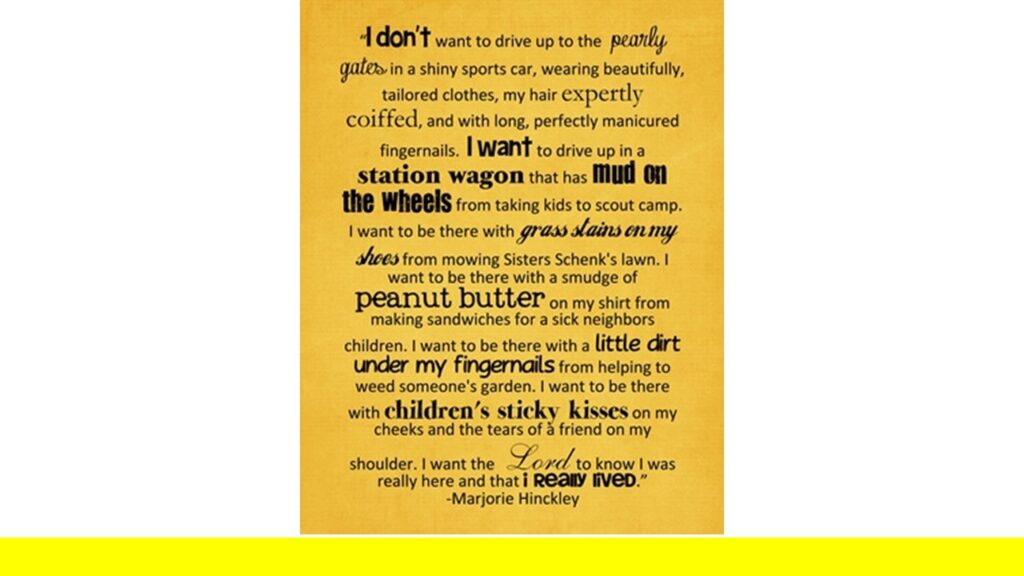
cute font,
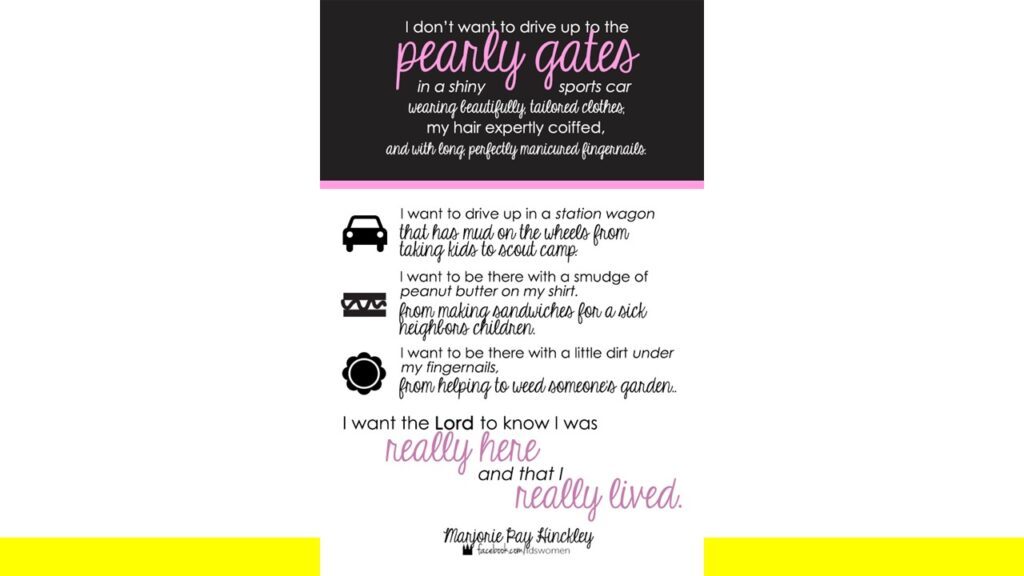
diagrams of a car and sandwich,

a drawing of laundry (which is not even mentioned in the quote!),

a staged photograph of adorable children,
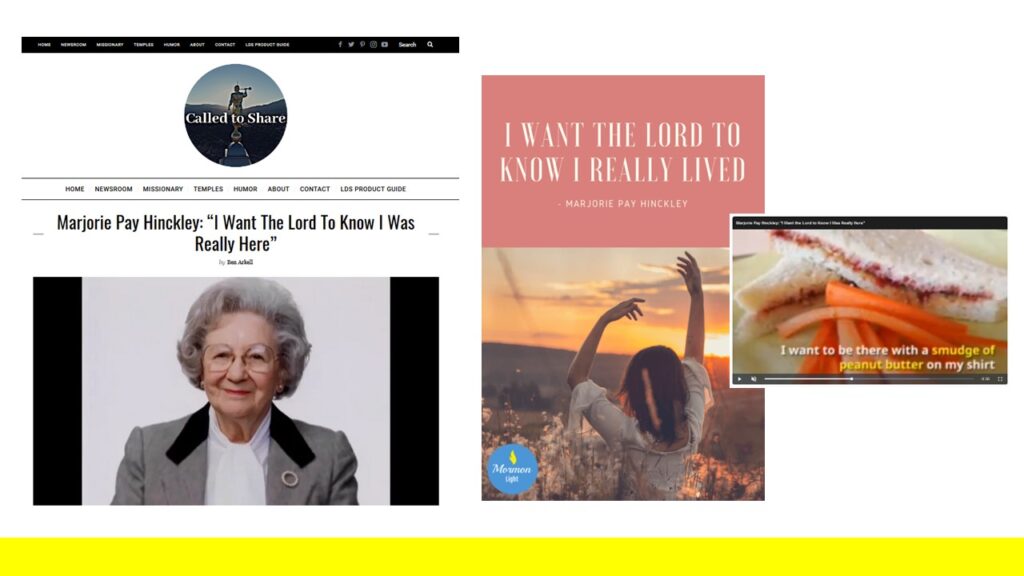
blog posts, videos, and even a yoga routine!
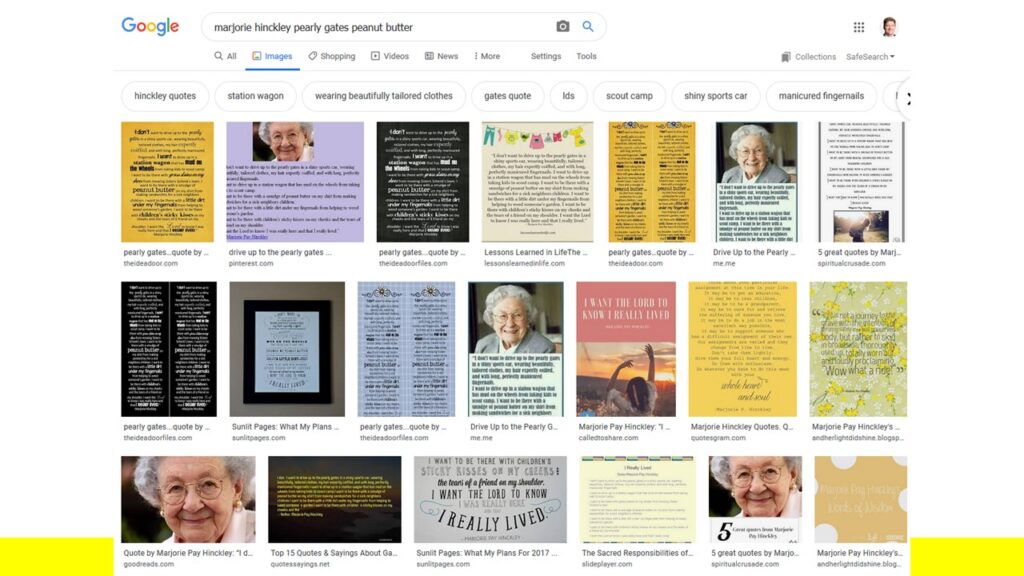
The quote is attributed to Sister Hinckley in literally thousands of places online. The top two hits are to the website Goodreads, which is a good place to start and a terrible place to end because nothing on the site is original. It is all copied and pasted from somewhere else. But where? Each page provided only her name.
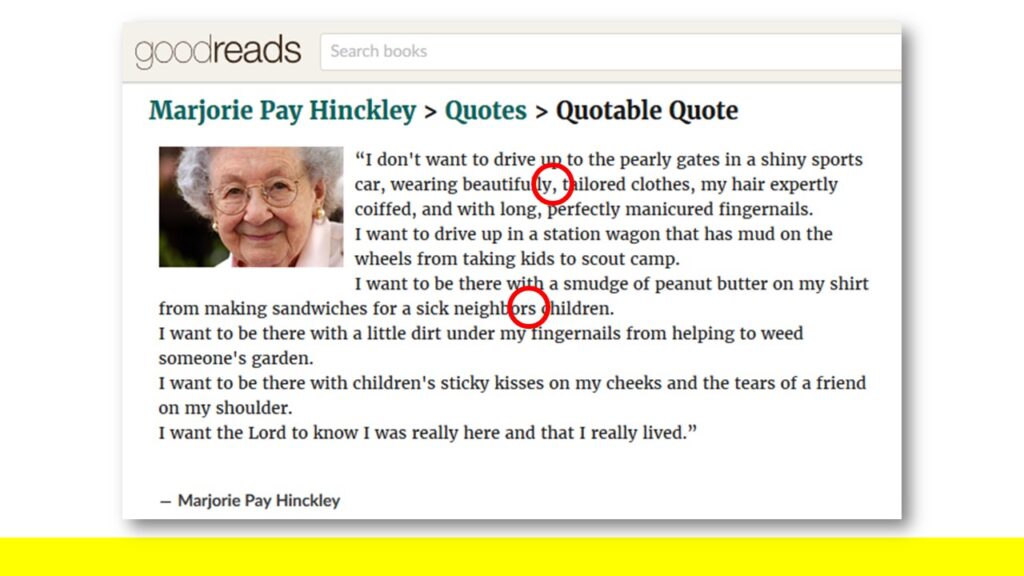
Here’s where we begin to look at specific details. Two grammatical errors caught my eye—a misplaced comma and a missing apostrophe.
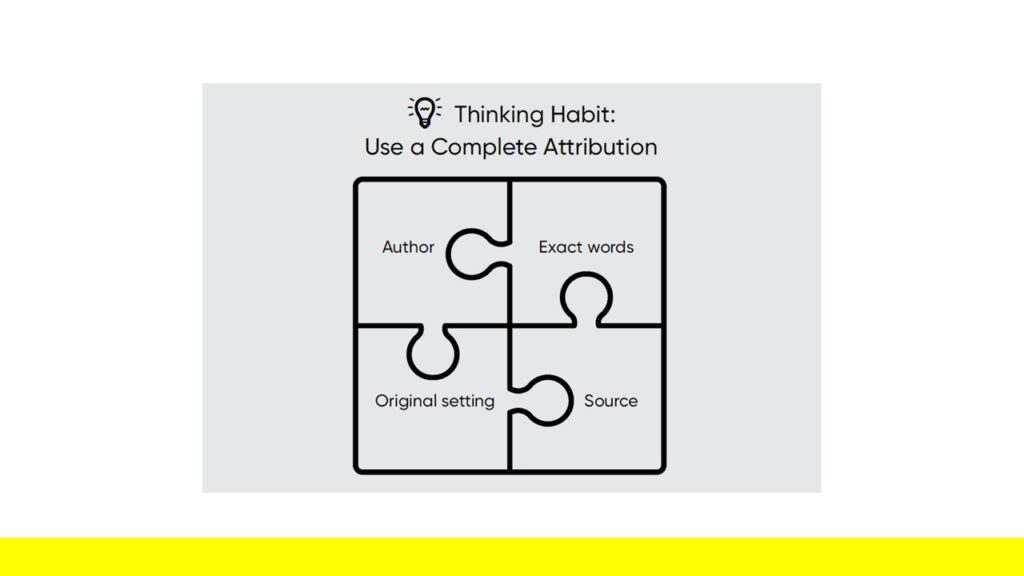
Every complete attribution should contain four elements: an author, the exact words, the original setting, and the source. Goodreads presented an author, but the grammatical errors made the wording suspicious, and it lacked an original setting and source.
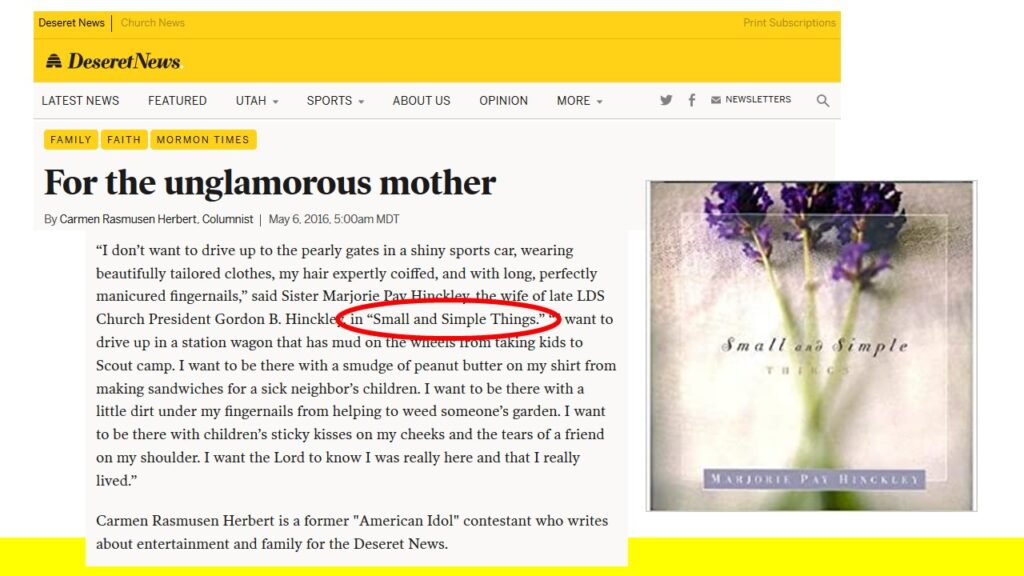
I began to search to see if someone else had already found a source. I found a news column, written for Mother’s Day in 2016, that attributed the quotation to Sister Hinckley’s book Small and Simple Things. The author of the column did not cite a page number, so I read the entire book—and found nothing.
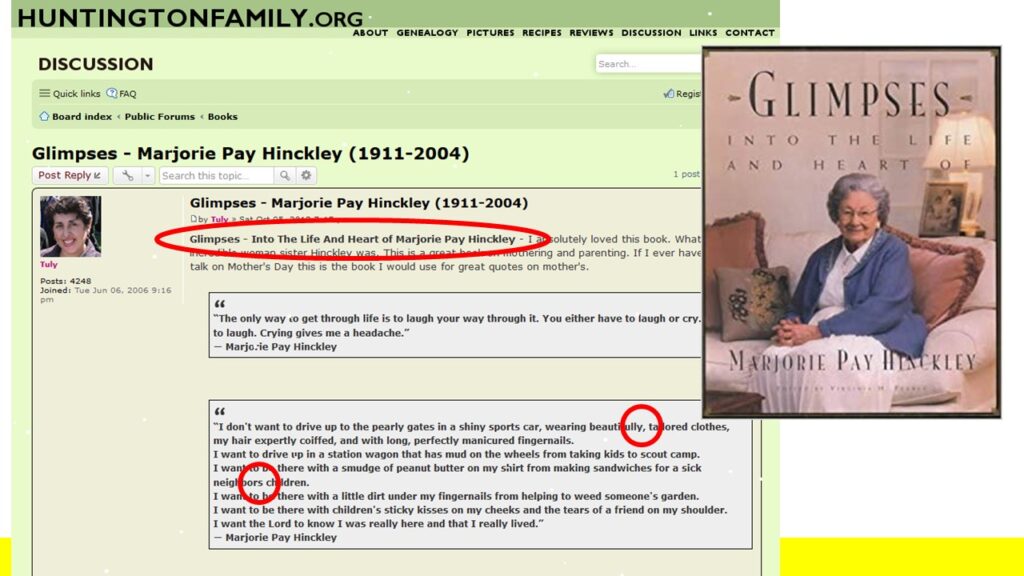
A blogger cited the book Glimpses, which likewise did not contain the quotation. And look at this . . . this blogger simply copied and pasted from Goodreads, including the errors, and then made up the citation!
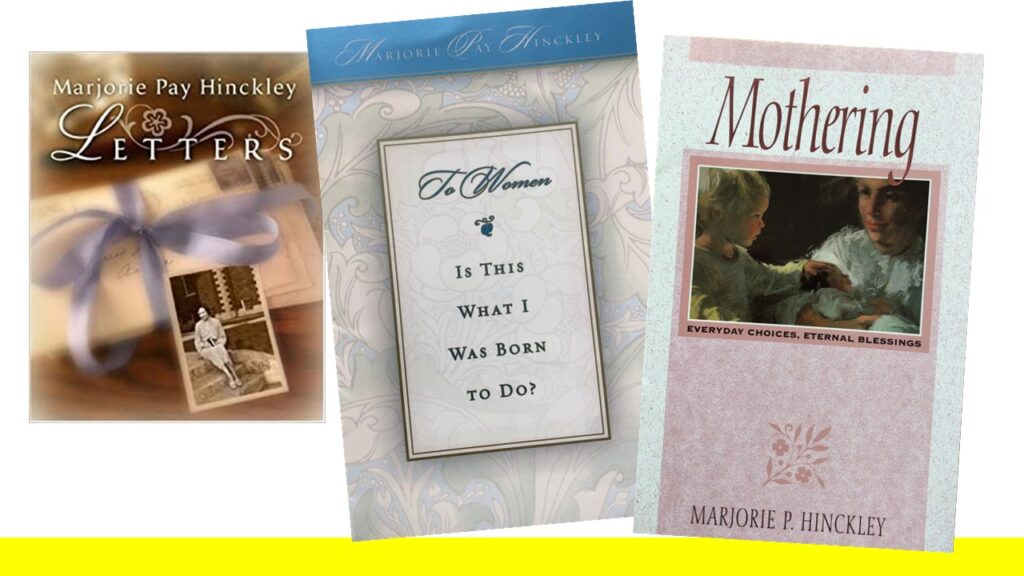
So I next read everything by Sister Hinckley. The words did not appear in any of the three pamphlets she authored, it was not in a collection of letters to her family. No matter how many Pinterest boards or blogs made the claim, it appeared that she never wrote or spoke those words. So where did they come from?
I kept searching, refining the search terms, narrowing the field, weeding out mishits. Finally, I found a blog post on which one of the commenters recalled hearing the quote in a speech at the 1997 Brigham Young University Women’s Conference. I found the proceedings of the conference and, sure enough, a speaker had quoted those words more or less, but could not remember where she had heard them. So, more than twenty years later, I found that speaker and asked about her source. After the quote’s popularity exploded online, she had double checked and was proud to report that the quote had come from a book . . . but the book had been published in 1998, one year after her speech at BYU. I contacted the author of the book, who admitted to sharing the story in talks given in settings like ours today for many years before publishing the book. He said he never revealed the source out of respect for privacy, but now the author was dead so he gave me her name.
I located and telephoned the author’s children and the true story turns out to be even more amazing!
“You know that quote that everyone shares by Sister Hinckley? It was written by your mom.”
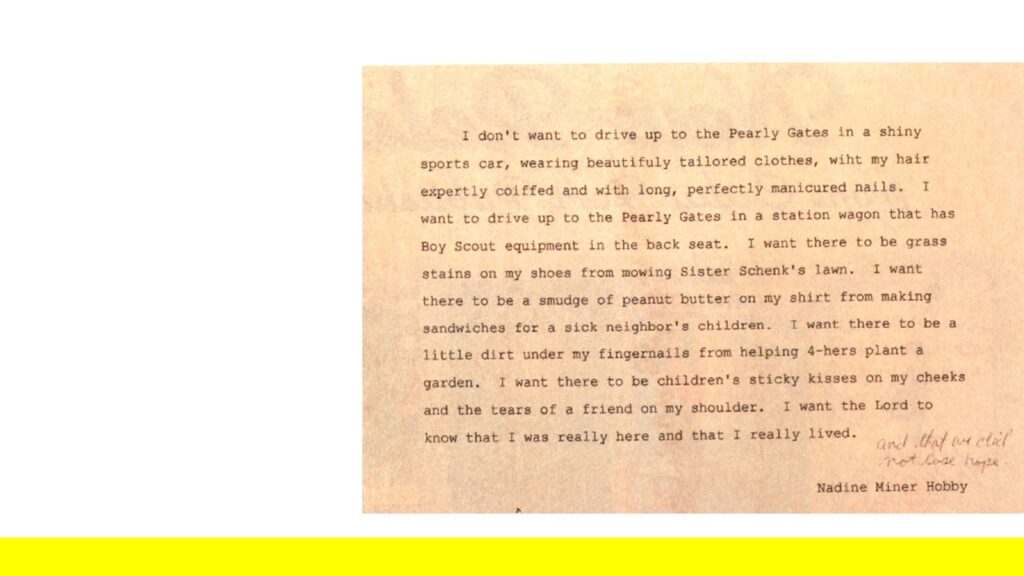
After they recovered from the surprise, they told me the rest of the story. The author of these words was a Latter-day Saint mother who experienced divorce and single motherhood before going back to school to become a schoolteacher and then passing away abruptly due to cancer. In the final weeks, she was too ill to go on a visiting teaching visit, so she called for her typewriter and typed out this thought as a substitute and an apology for not visiting in person. The original was kept by the receiving sister, and it is a little different from the more generalized version on Goodreads. In the original, there was no mud on the car wheels but Boy Scout equipment in the back seat; the dirt under the fingernails came not from weeding a garden but from helping kids to plant one; and there are also grass-stained shoes from mowing the lawn of Sister Schenck.
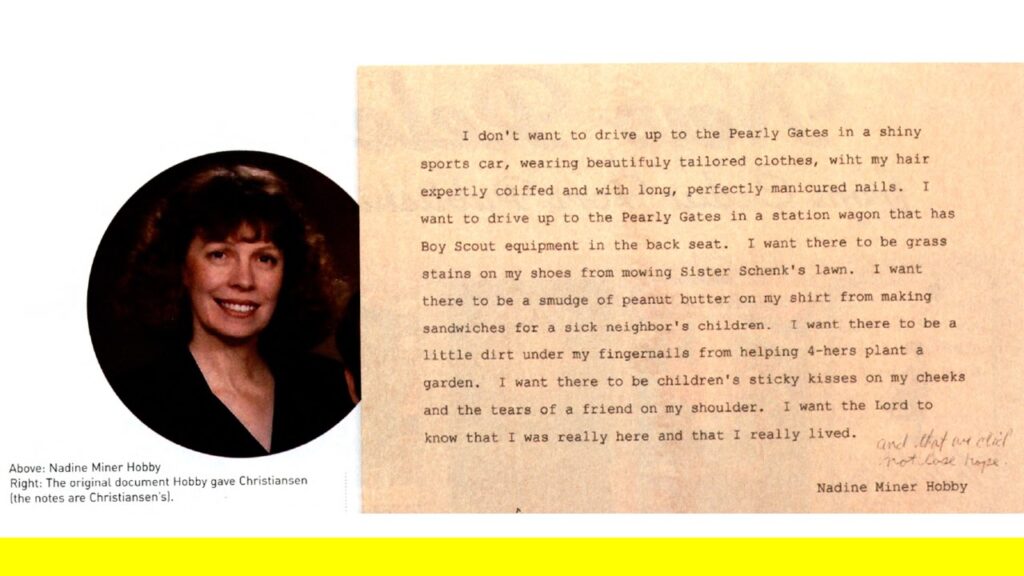
These beautiful words were authored by Nadine Miner Hobby, whose children authorized me to share this photo. Marjorie Hinckley never said these words – I hope that we can now attribute the statement accurately to Nadine as the author and share the actual words in her own voice.
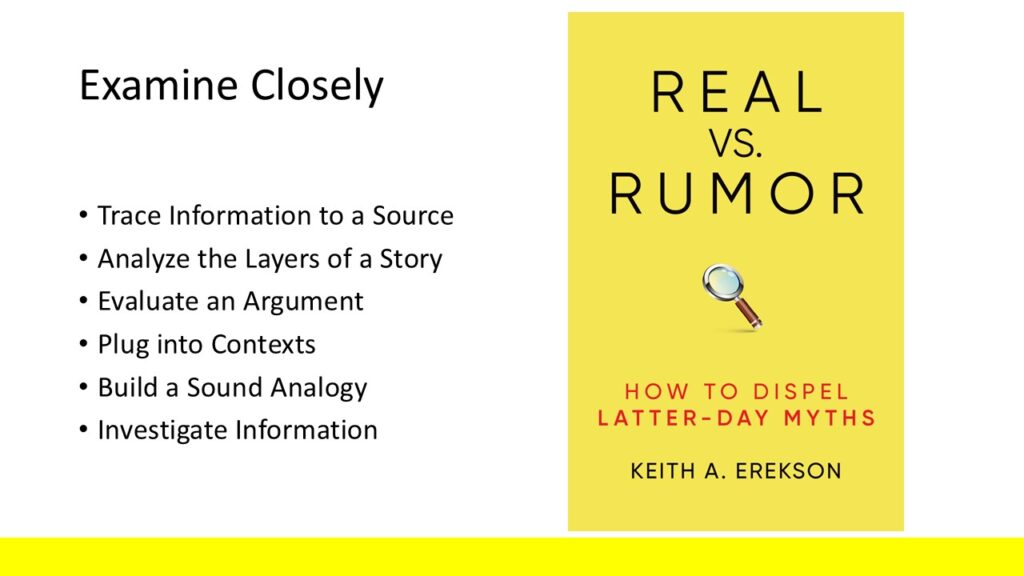
Real vs. Rumor
The routines for tracing information to a source and using a complete attribution are among many routines I introduce in the book, Real vs. Rumor: How to Dispel Latter-day Myths. Others help to analyze a story, evaluate an argument, see things in context, build sound analogies, and investigate information.
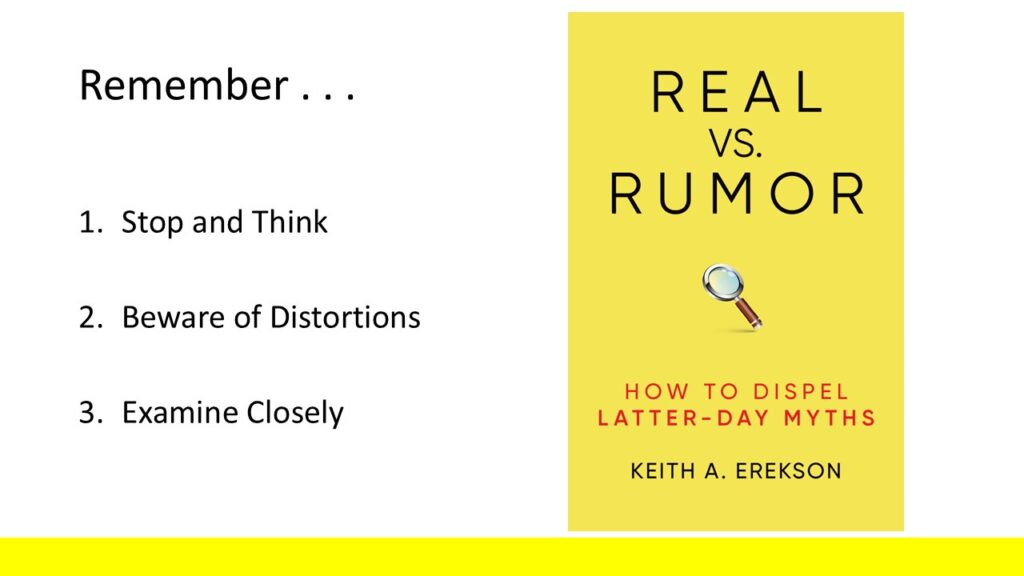
Today I shared three habits that I hope will help you discern good information: stop and think, beware of distortions, and examine closely. The ability to discern good information is one of the most important skills to develop in our modern Information Age. The good news is that discernment is both a skill we can improve and a gift of the Spirit we can seek. President Russell M. Nelson taught that “to discern means to sift, to separate, or to distinguish.” It is a “supernal gift” that “allows members of the Church to see things not visible and to feel things not tangible.” It is also a thinking skill that we can improve through practice to develop a keen eye, an analytical mind, and good judgment. By combining inspiration with intelligence, we can find and follow truth.
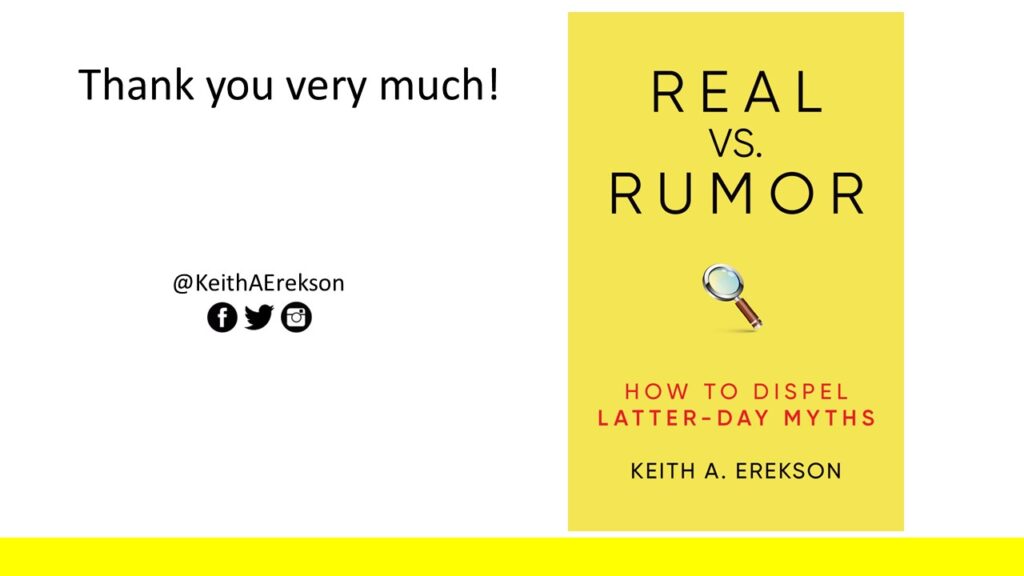
God bless you in your thinking; and [Elvis impersonation] thank you, thank you very much!
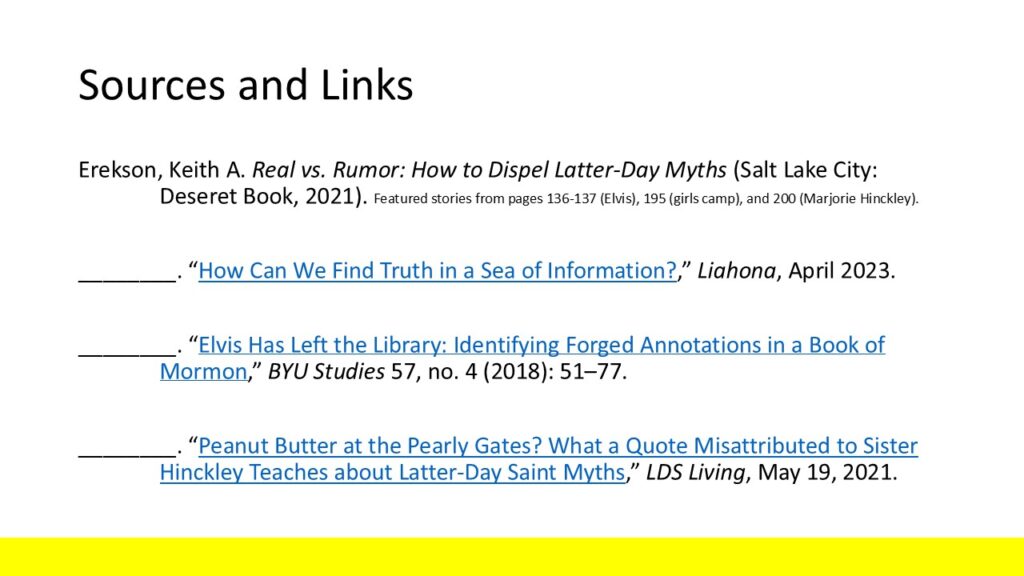
Coming soon.
- Moses 7:62.
- Moroni 10:5.
- Matthew 13:47–48.
- Doctrine and Covenants 93:24.
- Keith A. Erekson, “Elvis Has Left the Library: Identifying Forged Annotations in a Book of Mormon,” BYU Studies 57, no. 4 (2018): 51–77.
- Keith A. Erekson, Real vs. Rumor: How to Dispel Latter-Day Myths (Salt Lake City: Deseret Book, 2021), 195.
- See Keith A. Erekson, “How Can We Find Truth in a Sea of Information?,” Liahona, April 2023.
- Erekson, Real vs. Rumor, 145.
- Erekson, Real vs. Rumor, 203.
- Keith A. Erekson, “Peanut Butter at the Pearly Gates? What a Quote Misattributed to Sister Hinckley Teaches about Latter-Day Saint Myths,” LDS Living, May 19, 2021.
- Russell M. Nelson, “Ask, Seek, Knock,” Liahona, Nov. 2009, 83.

